Neuraminidase (NA) 370-Loop Mutations of the 2009 Pandemic H1N1 Viruses Affect NA Enzyme Activity, Hemagglutination Titer, Mouse Virulence, and Inactivated-Virus Immunogenicity
- PMID: 35746775
- PMCID: PMC9230709
- DOI: 10.3390/v14061304
Neuraminidase (NA) 370-Loop Mutations of the 2009 Pandemic H1N1 Viruses Affect NA Enzyme Activity, Hemagglutination Titer, Mouse Virulence, and Inactivated-Virus Immunogenicity
Abstract
Hemagglutinin (HA) and neuraminidase (NA) are the two major envelope proteins of influenza viruses. The spatial organization of HA and NA on the virus surface needs to be optimized to promote viral fitness, host specificity, transmissibility, infectivity, and virulence. We previously demonstrated that the recombinant NA protein of the 2009 pandemic H1N1 (pH1N1) with the I365T/S366N mutation in the NA 370-loop elicited higher NA-inhibition antibody titers against the homologous pH1N1 virus and three heterologous H5N1, H3N2, and H7N9 viruses in mice. In this study, we used PR8-based reverse genetics (RG) by replacing the HA and NA genes of A/Texas/05/2009 pH1N1 virus to obtain the wild-type pH1N1 and three NA 370-loop mutant viruses of pH1N1 (I365T/S366N), RG pH1N1 (I365E/S366D), and RG pH1N1 (I365T/S366A). Our results revealed that the viral NA enzyme activity increased for the RG pH1N1(I365T/S366N) and RG pH1N1 (I365E/S366D) viruses but reduced for the RG pH1N1 (I365T/S366A) virus. The increased or decreased NA enzyme activity was found to correlate with the increase or decrease in HA titers of these NA 370-loop mutant viruses. All of these three NA 370-loop mutant RG pH1N1 viruses were less virulent than the wild-type RG pH1N1 virus in mice. Immunizations with the inactivated viruses carrying the three NA 370-loop mutations and the wild-type RG pH1N1 virus were found to elicit approximately the same titers of NA-inhibition antibodies against H1N1 and H5N1 viruses. These results may provide information for developing NA-based influenza virus vaccines.
Keywords: 370-loop; influenza virus; neuraminidase; vaccine.
Conflict of interest statement
The authors have declared that no competing interests exist. S.-C.W. is an employee of Adimmune Corporation, and the company had no role in the design of the study; in the collection, analyses, or interpretation of data; in the writing of the manuscript, and in the decision to publish.
Figures

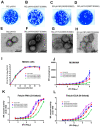
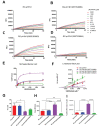
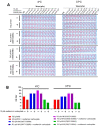
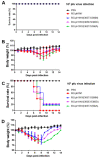
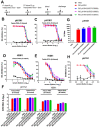
Similar articles
-
Cross-Reactive Neuraminidase-Inhibiting Antibodies Elicited by Immunization with Recombinant Neuraminidase Proteins of H5N1 and Pandemic H1N1 Influenza A Viruses.J Virol. 2015 Jul;89(14):7224-34. doi: 10.1128/JVI.00585-15. Epub 2015 May 6. J Virol. 2015. PMID: 25948745 Free PMC article.
-
Inactivated H7 Influenza Virus Vaccines Protect Mice despite Inducing Only Low Levels of Neutralizing Antibodies.J Virol. 2017 Sep 27;91(20):e01202-17. doi: 10.1128/JVI.01202-17. Print 2017 Oct 15. J Virol. 2017. PMID: 28768855 Free PMC article.
-
Neuraminidase-Inhibiting Antibody Titers Correlate with Protection from Heterologous Influenza Virus Strains of the Same Neuraminidase Subtype.J Virol. 2018 Aug 16;92(17):e01006-18. doi: 10.1128/JVI.01006-18. Print 2018 Sep 1. J Virol. 2018. PMID: 29925654 Free PMC article.
-
A contributing role for anti-neuraminidase antibodies on immunity to pandemic H1N1 2009 influenza A virus.PLoS One. 2011;6(10):e26335. doi: 10.1371/journal.pone.0026335. Epub 2011 Oct 24. PLoS One. 2011. PMID: 22039464 Free PMC article.
-
Extending the Stalk Enhances Immunogenicity of the Influenza Virus Neuraminidase.J Virol. 2019 Aug 28;93(18):e00840-19. doi: 10.1128/JVI.00840-19. Print 2019 Sep 15. J Virol. 2019. PMID: 31375573 Free PMC article.
Cited by
-
Receptor Binding Properties of Neuraminidase for influenza A virus: An Overview of Recent Research Advances.Virulence. 2023 Dec;14(1):2235459. doi: 10.1080/21505594.2023.2235459. Virulence. 2023. PMID: 37469130 Free PMC article. Review.
-
Two amino acid residues in the N-terminal region of the polymerase acidic protein determine the virulence of Eurasian avian-like H1N1 swine influenza viruses in mice.J Virol. 2024 Oct 22;98(10):e0129324. doi: 10.1128/jvi.01293-24. Epub 2024 Aug 30. J Virol. 2024. PMID: 39212447 Free PMC article.
References
Publication types
MeSH terms
Substances
LinkOut - more resources
Full Text Sources
Medical

